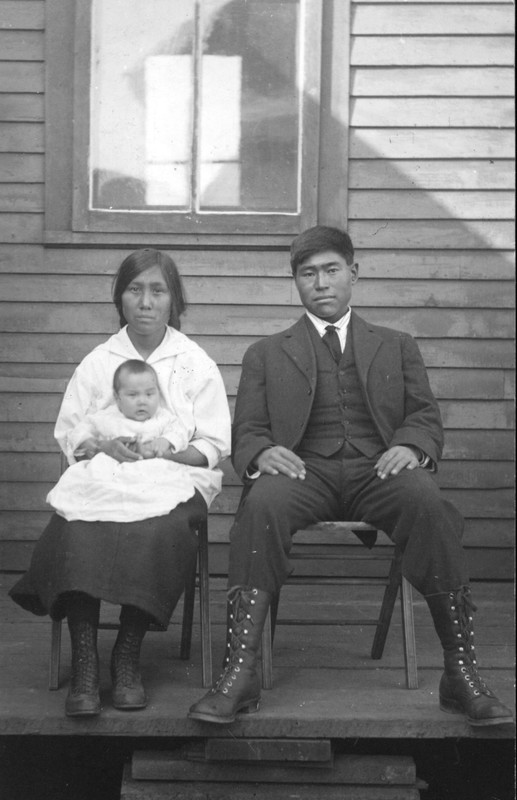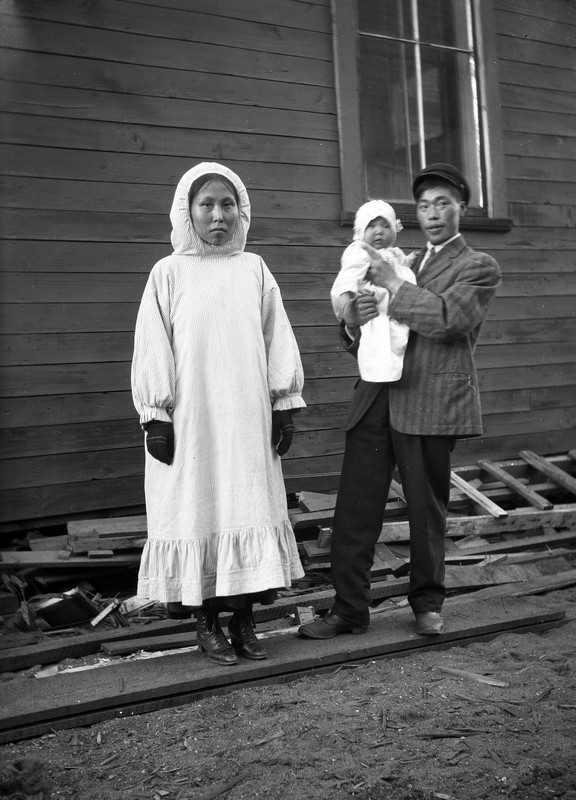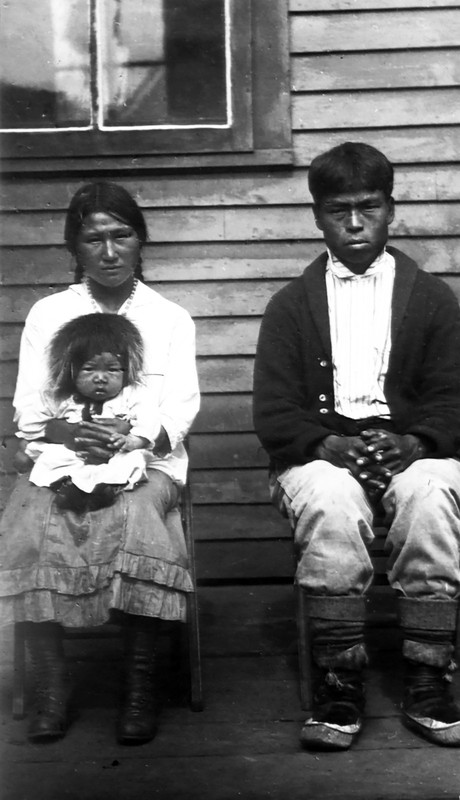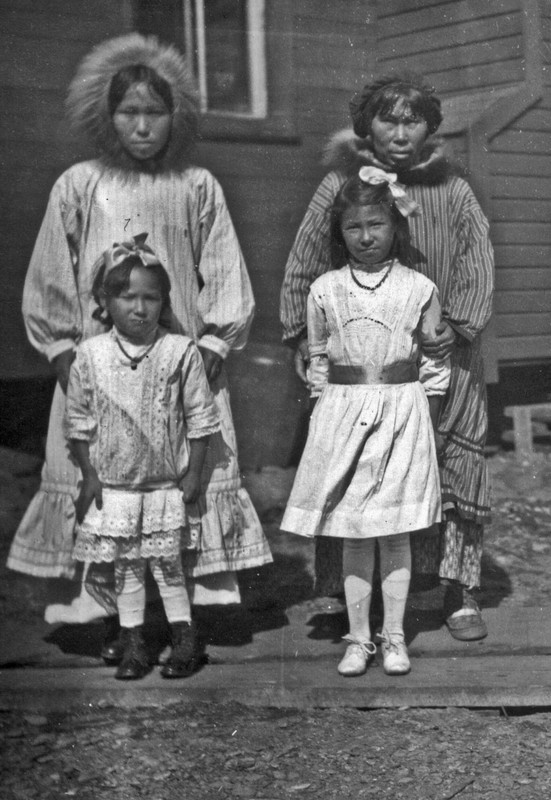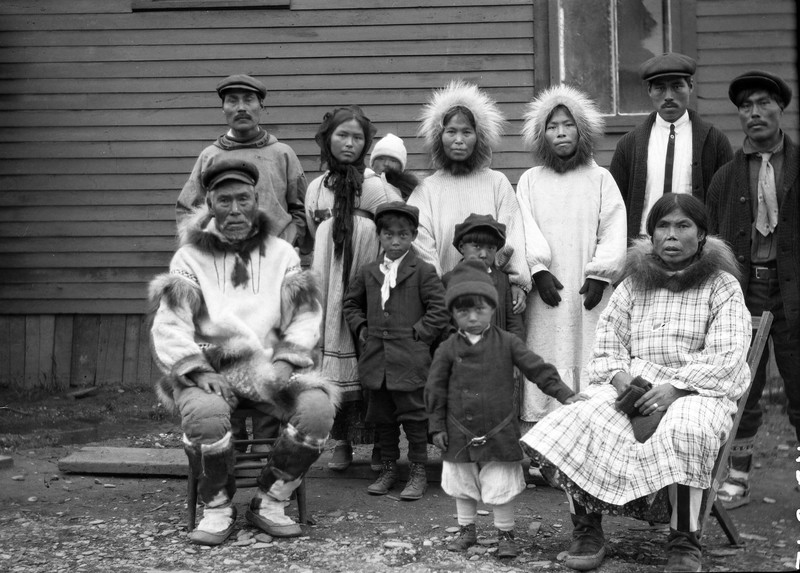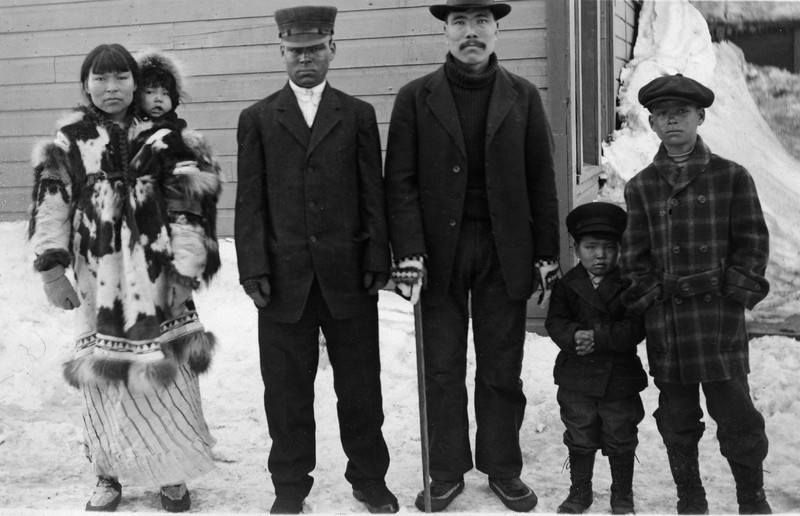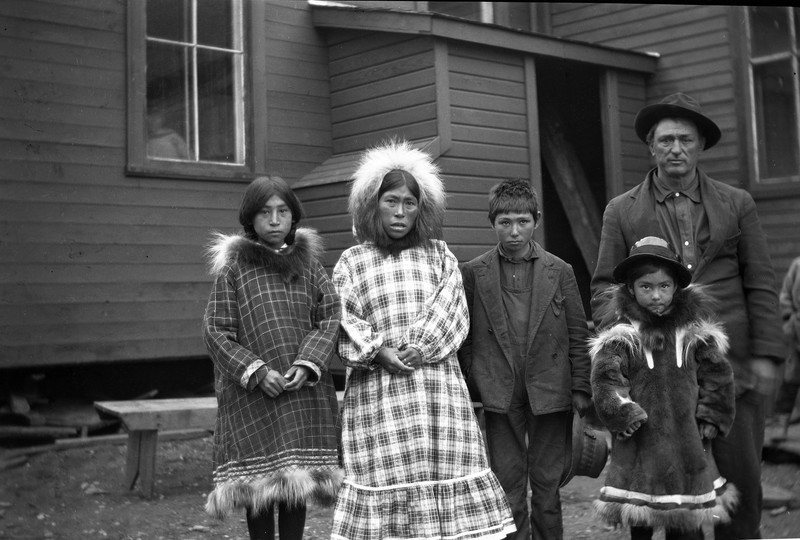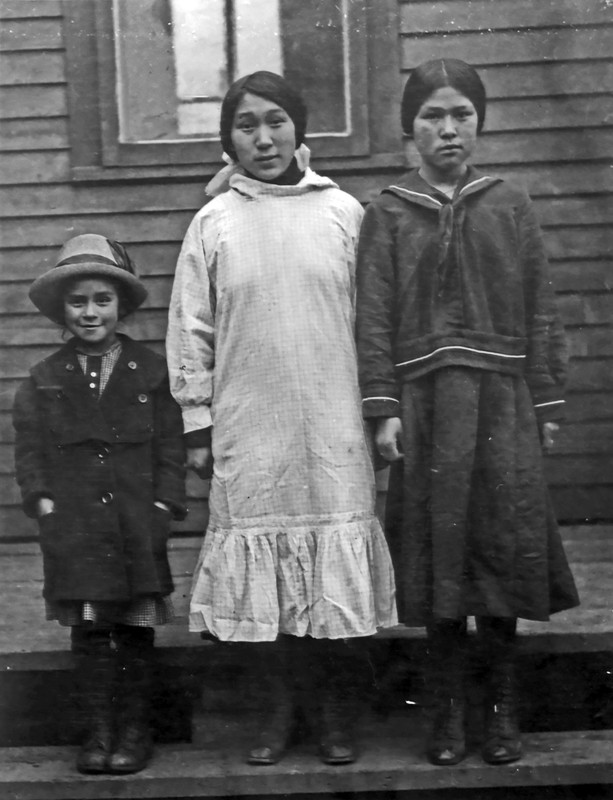King islanders and Jesuit Influence
When the Jesuits went to King Island to spread Catholicism to the natives, they used the society's children as an entry point for both the religion and the westernizing that came with it. They did this largely through building a school to educate the children, a chapel and later a church. Newspaper clippings from the times read, "Construction [of the school] will enable about 80 boys and girls to start their education" (King Island & LIttle Diomede Collection, Newspaper clippings 1909-1937, pg 312).
In addition, stories such as LaFortune, S.J.’s account of a chief’s daughter seemed to help bring the natives to the faith. LaFortune’s diary reads, “he King Islander had then for chief a saintly old man by the name of Arisac. It is hard to find a more religious nature . . . He had a little girl that was sickly. Almighty god was to make use of that frail instrument to bring the whole island to the fold. With the consent of her parents she was baptized. During the winter of 1904-1905 her health failed more and more. In her last days, though she was not more than five years old, she would speak to all those who came to see her in a most edifying way. One day, her father put a clock in her hands and asked her at what hour she would go to heaven. With her little finger, she pointed to 3 o’clock; and at exactly three o’clock, she passed away. That settle it with the King Islanders. The years after they entered the fold by gangs till they all became Catholics” (King Island & LIttle Diomede Collection, Diary by Father Ballarmine Lafortune, S.J., pg 81).
In the following four photographs, the Western influence can be seen through the children's clothing; their clothing appears to be baptismal gowns or Sunday school attire. While many of the adults are also in Western garb, it appears to be the children who are consistently dressed in clothing that highlights traditional Catholic Sunday attire.
The Jesuit's influence on King Islander society is shown through the integration of the children into the faith through education and sacred sacraments such as baptism.
These two photographs further demonstrate the children as an entry point for western influence; most of the children are in Western garb, while the adults—especially the women—remain in traditional clothing. This could be because the women continued to play their traditional roles in King Islander society, and carried on traditions, while the men adapted to the new culture. Not all the children are in Western clothing, which could indicate a more gradual change of culture.
Western influence can further be seen through mixed raced families and children. These families integrated the cultures; in the group photo, the man who appears to be the father is white, the woman is King Islander, and the children appear to be mixed race. The man and boy in the photo are both wearing Western clothing, while the woman and girls are in the Native dress. It is interesting to note that the girl on the right is also wearing a Western hat, indicating that even the clothing styles in these families mixed.
The second photo is of Nome children, and the back of the photo reads, “half-breed children.” These children probably faced prejudice from both cultures. Again, their clothing is an integration of both Western and Native dress. Children were the catalyst for change; when the children became adults, they would have had more bearing in both societies and brought about the cultural change.

